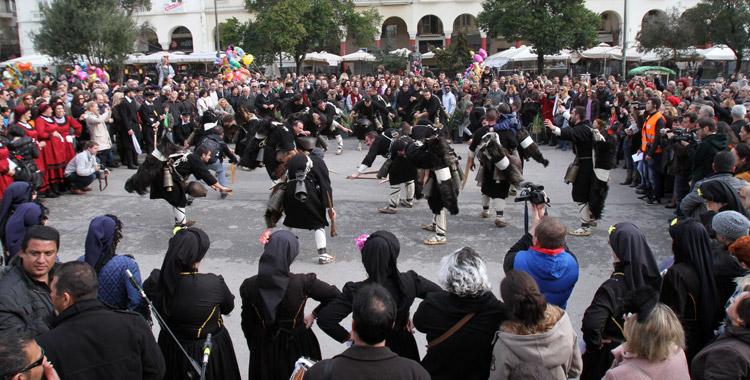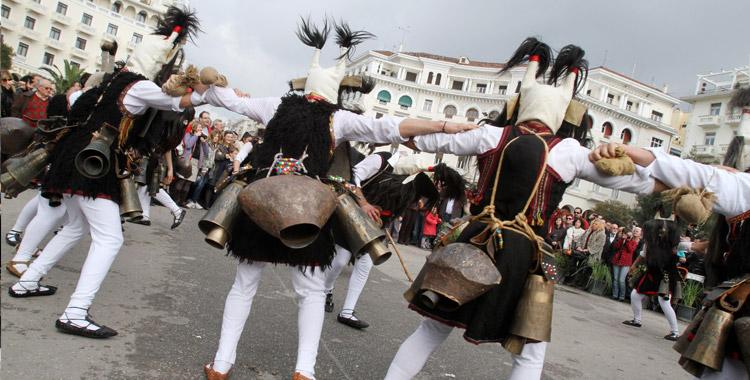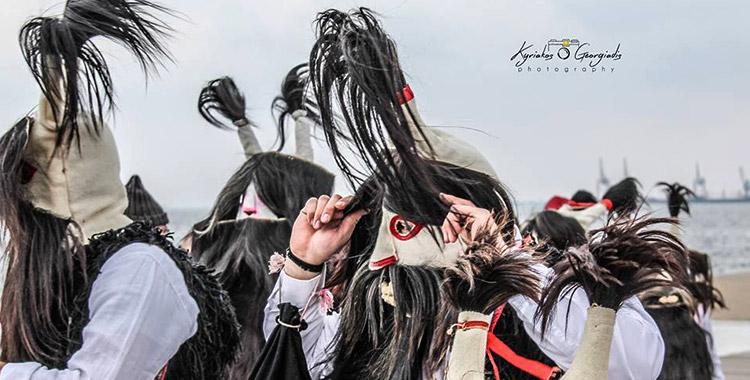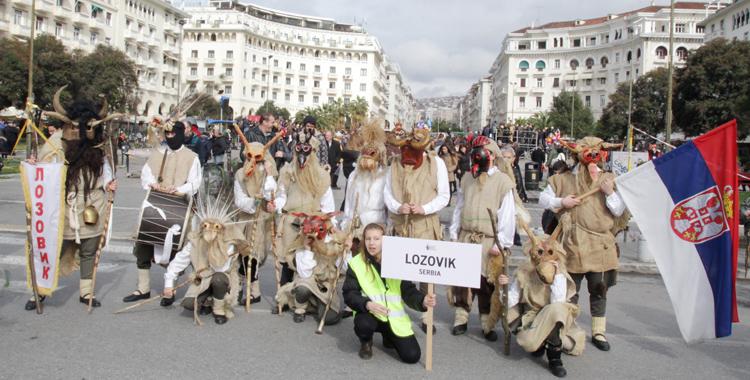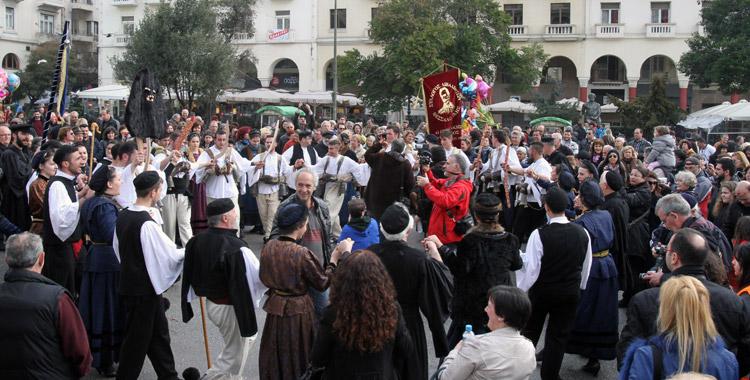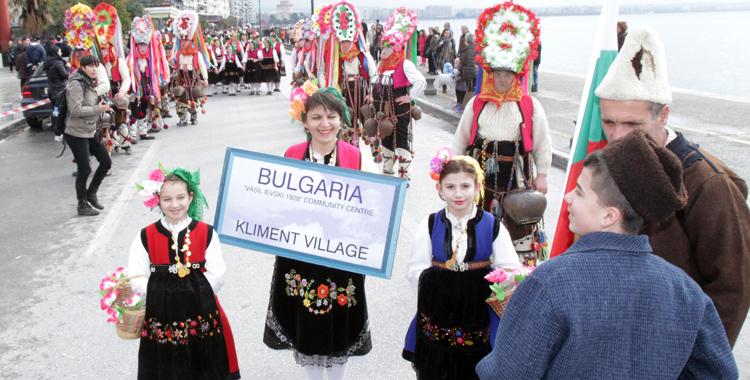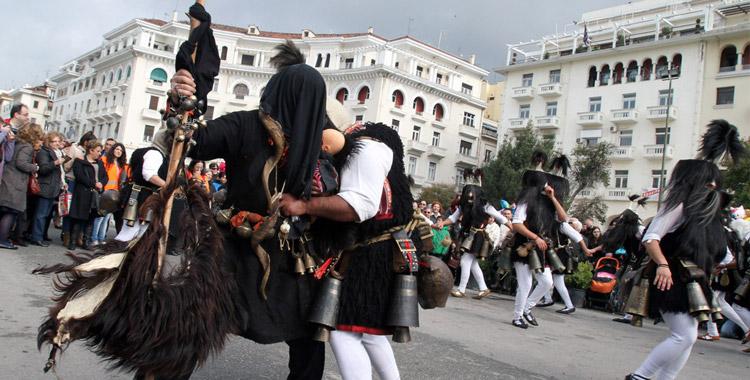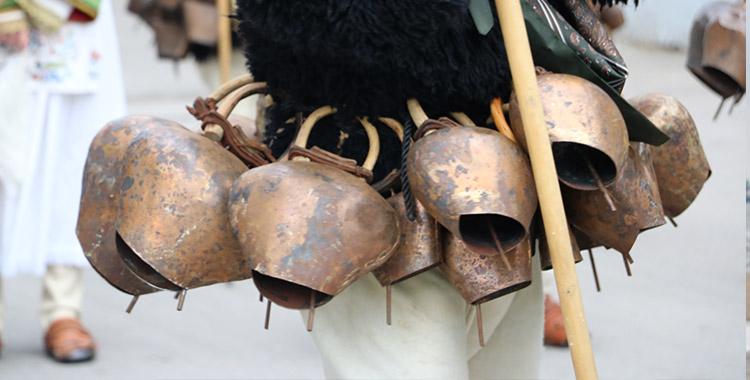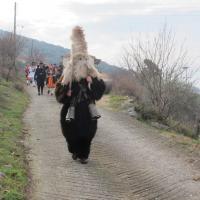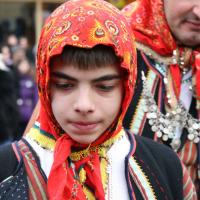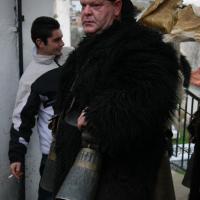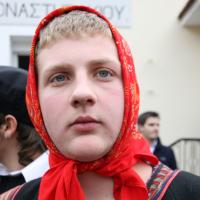Monastiraki (Drama Municipality, Drama County)
“Arapides” (Blacks) January 6
The cast of the performance-“dromeno”, called the “tseta”, consists of “Arapides” (Blacks), “Gilliges”, “Papoudes” (grandparents) and “Tsoliades”. The “Arapides” wear black pastoral cloaks that cover the entire body and impressive peaked goatskin head masks. On their waist they place three large bells, “batali” (large bells) or “kypri” (smaller bells, local name “tsianouve”), which are harmonically matched. They also hold a large wooden sword and a small bag of ashes, which they gathered during the Twelve Days of Christmas. The group of “Gilliges” (brides) are young men from the village dressed in local traditional female costumes. The “Papoudes” wear traditional festive male costume and “Tsoliades” wear “foustanella” (a traditional cotton kilt), colourful scarves on their back and a black head scarf with fringes, for headdress, that symbolized the mourning of the enslaved homeland. Formerly the “Tsoliades” painted their faces black and wore a mask to not be recognized by the enemy. The group of “Pappoudes” and “Tsoliades” were added to the “tseta” (cast) at a later time of the custom, the first to honour the older generations and the second the Greek attire. The “tseta” is accompanied by instrumentalists of local traditional musical instruments, the Macedonian lyra and the “dahare” (a type of a frame drum).
The afternoon on January 5th (Epiphany eve), a feast is taking place in the “House of Arapi (Black)” where a group of children starts roaming the village streets shaking the “Arapides’ ” bells, thus heralding the custom of the next day.
On the day of the Feast of Epiphany, January 6, early in the morning, the “tseta” along with the instrumentalists wander the streets and stop at the houses of the village where with dances, songs and treats they exchange wishes. The custom culminates with the spectacular occupation of the square by the “Arapides”, with the deafening sound of bells. This opens the way to the other members of the “tseta”, starting with the “Tsoliades” that follow dancing. Then a great dance begins in which residents and visitors of the village take part. During the dance one “Gilliga” approaches, the first in line, dancer and places on his shoulder a scarf (local name, “tsevra”) and in return he gives a tip for the “tseta”. Throughout the breaks two cheerful masqueraders appear, dressed up as a bear and the bear master, to amuse the spectators.
At the end of the performance (“dromeno”), a representation of ploughing and sowing occurs. One “Tsolias” yoke two “Arapides” to a wooden plough and starts “ploughing” the square while an old farmer of the village is “sowing”. This mimicry of tillage and sowing has a preventative and salutary meaning and aims, to this day, to protect the community from evil forces.





